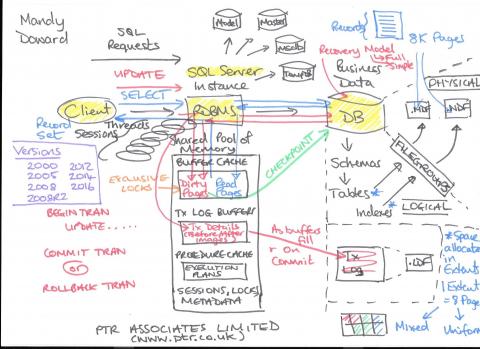Why is our SQL Server Application running so slowly?
SQL Server Database Application performance issues?
- Are customers complaining your system is too slow?
- Are users complaining tasks take too long?
- Are some client applications running slowly or timing out?
- Are some queries/reports taking forever?
- Do you see intermittent performance problems?
- Is data entry taking too long?
- Is the Database Server not responding very well?
- Are your users and/or customers complaining that SQL Server based systems are not performing very well?
- Do things seem to perform well one day and not the next?
Database applications can perform badly for many reasons. Here are some:
- Server specification is not up to the job
- Network congestion
- SQL Server is not configured optimally
- Database design doesn't suit requirements
- Interactive users are competing with reporting/data analyst users
- Inefficient programming code in client applications
- Inefficient Index and Locking strategies
- Inefficient query design
- Virtualisation issues
- Storage solution issues
We can help! As well as almost three decades of experience, we have specialist tools including Performance Monitor, SQL Profiler, Extended Events, DBCC and hundreds of metadata/dynamic management views available for troubleshooting our SQL Server platforms. Tools only help if you have the expertise to use them effectively - you need a good understanding of the internals of SQL Server and how it evaluates, optimizes and executes tasks behind the scenes.
Take a look at this architecture diagram I draw when I teach the SQL Server Performance & Tuning Course:

I'd hazard a guess that by the time I have finished going through this diagram I have probably usually used a lot more than 1,000 words!! And this isn't the only diagram I draw.
There are so many things going on behind the scenes and the goal posts are continually moving because your data is constantly changing and growing.
I love teaching the SQL Server Performance & Tuning course because every delegate who walks through the classroom doors has a different scenario, a different set of challenges, and a different story to tell. Through me you improve your knowledge and experience (hopefully returning to work to solve your performance issues), and through you I continually develop my knowledge and understanding of how businesses are implementing SQL Server solutions. I love to learn as well as to teach, and I love a technical challenge!
For assistance with monitoring, troubleshooting and tuning your SQL Server systems why not take a look at our SQL Server Performance & Tuning courses. Not only will you benefit from learning about the architecture, internals, tools, methodology and more, but you will get to share your experience with others who are in the same boat as you. With this course more than many we find that attending delegates swap contact details and stay in touch after the course.
Take a look at the course outline or book your place: SQL Server Performance & Tuning. If you have questions on the course content or you're looking for bespoke training tailored to your specific business needs, we're always happy to chat. We also provide consultancy, so if this is more appropriate do get in touch. Call on 0118 979 4000 or email info@ptr.co.uk.

